Oris Aquis GMT Date Whale Shark Limited Edition
A special Aquis GMT Date to raise awareness about the dwindling numbers of the gentle giants of our oceans.
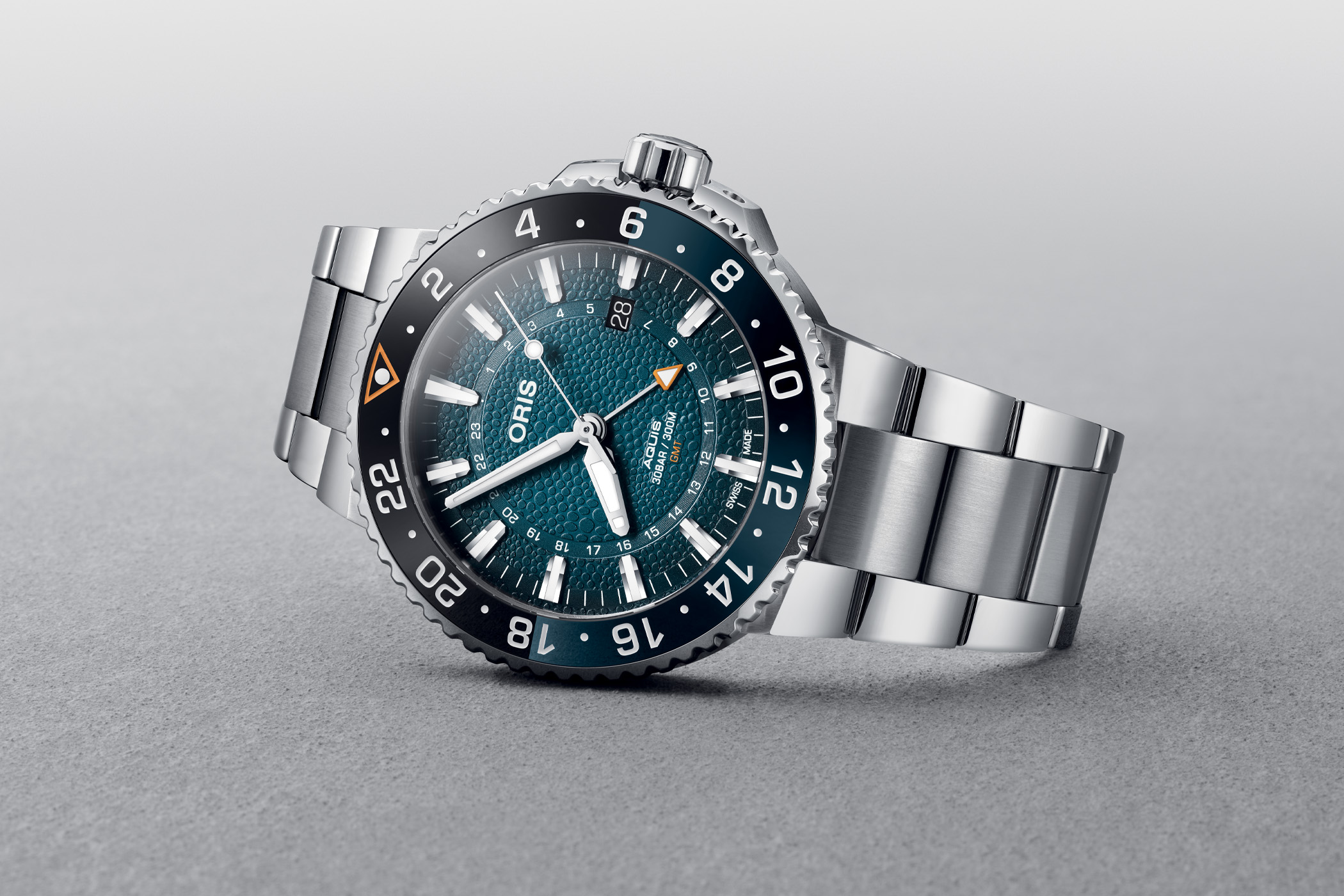
Whale sharks, the gentle giants of the ocean that can measure the length of a school bus, were classified as an endangered species by the International Union for Conservation of Nature (IUCN) in 2016. Illegal fishing, collisions with boats and entrapment in fishing gear are decimating the population of whale sharks. Despite their enormous dimensions, whale sharks are docile plankton-eating creatures that pose no threat to man. Conversely, man is the biggest threat to whale sharks. To raise awareness of their plight and promote a wider understanding of this fascinating creature, Oris releases a special 43.5mm Aquis GMT Date model with a dial that evokes the spotted backs of the whale shark.
For the past decade, Oris has joined the bandwagon of environmental conservation. Grouped under its “Change for the Better” programme, initiatives from restoring, cleaning and protecting the oceans are promoted with the release of dedicated limited editions. These initiatives range from removing plastic from the oceans and protecting coral reefs to raising awareness of the fate of species like the blue whale. Today, it’s time to explore the situation of the largest fish in the ocean, the magnificent whale shark. The watch family chosen to represent the cause is the Aquis, the brand’s high-performance contemporary dive watch. The GMT version of the Aquis appeared in 2019, a winning combination of a robust 300m dive watch with a practical GMT function for globetrotters capable of tracking up to three different time zones.
Gentle Giants
The whale shark (Rhincodon typus) is the largest fish in the ocean; to be more precise, it is the largest non-cetacean animal on our planet. Christened the whale shark because of its enormous dimensions (ranging anywhere from 9 m to a record 18 m) and because of its filter-feeding technique like other whales, the whale shark dates back to the Jurassic and Cretaceous period but was not discovered until 1828 off the South African coast. Feeding on plankton and other small marine creatures, whale sharks engorge huge quantities of seawater and then filter the liquid with their gill rakers to capture the tiny plankton and krill. The most significant predator to the whale shark is man and its numbers in the Indo-Pacific seas are declining because of climate change, boat collisions and fishing. In some countries, the meat, gills, oil and fins for shark fin soup are precious commodities. The extinction of whale sharks would mean the collapse of delicate ocean ecosystems. Combined with the threat to the existence of whale sharks posed by man, their massive size, slow movements, slow reproduction rates and long lifespan complicate the situation of their recovery even further.
Oris ambassador, underwater photographer Gerardo del Villar began photographing whale sharks more than 15 years ago. According to del Villar, the best way we to overcome the threats to the whale shark is to create “marine protected areas” and to “educate people about the importance of whale sharks. We need to curb pollution of the sea. And we need to fight against climate change”. A tall order, but a message that Oris wants to get across with its Aquis Whale Shark watch.
a Spotted Dial
Apart from their dimensions, whale sharks are also known for the unique pattern of lines and white spots on their backs. The dial of the Aquis GMT evokes the spotted surface of the whale shark’s back with a special engraved pattern. Like other Aquis GMT models, the blue colour of the dial is graduated and becomes slightly darker towards the perimeter. However, its bubbly granular texture is very different from the glossy blue sheen of other Aquis GMT models. The 24-hour track corresponding to the arrow-shaped GMT hand is slightly recessed and snailed to stand out against the bubbly background and there is a date window at 3 o’clock. The applied indices and hands are picked out with Super-LumiNova, including the central seconds hand with its lumed lollipop area.
The rest of the watch is identical to other Aquis GMT models. Replacing the classic 60-minute dive scale with a 24-hour track, the Aquis GMT can display up to three different time zones simultaneously. Local time can be set using the standard hour hand, home time using the GMT hand with the orange tip, and a third time zone using the bidirectional GMT bezel in combination with the GMT hand. The notched two-tone black and blue ceramic insert on the bezel has a laser-engraved 24-hour scale filled in white. Like a day/night indicator, the black corresponds to night-time hours and the blue for daytime.
The steel case has a diameter of 43.5mm (50mm lug-to-lug and 14mm thick) and features brushed and polished finishes. Protected with crown guards, the crown is screwed down and the caseback sealed to offer water-resistance of 300 metres.
CALIBRE 798
Powering the Oris Aquis GMT Date is the automatic calibre 798, based on a Sellita SW 330-1. This outsourced movement has a 42-hour power reserve and beats at 4Hz. As always with such movements, it is a simple GMT complication, as the additional time zone is set by one-hour increments, and not the local time (as with a Rolex GMT-Master II, for instance). The movement and its hallmark red rotor are hidden underneath the stainless steel caseback with the engraving of a whale shark in the centre and the series number xxxx/2016.
Availability & price
The Oris Aquis GMT Whale Shark Limited Edition is limited to 2,016 pieces to mark the year of IUCN’s announcement and is now available from the brand’s website and retailers. The watch comes with an integrated steel bracelet with folding clasp and an extension system. It will retail for CHF 2,800.
More information at Oris.ch.

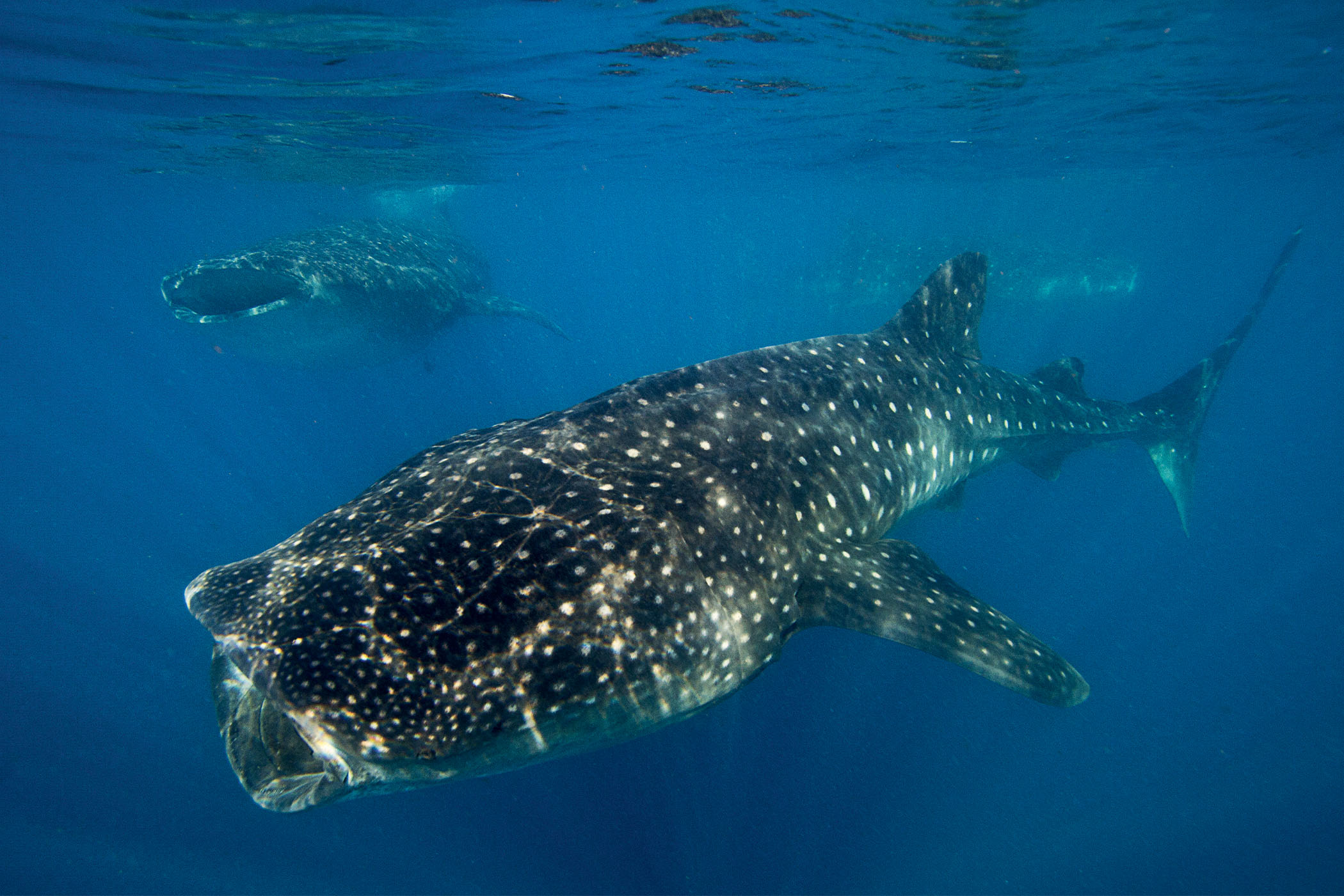

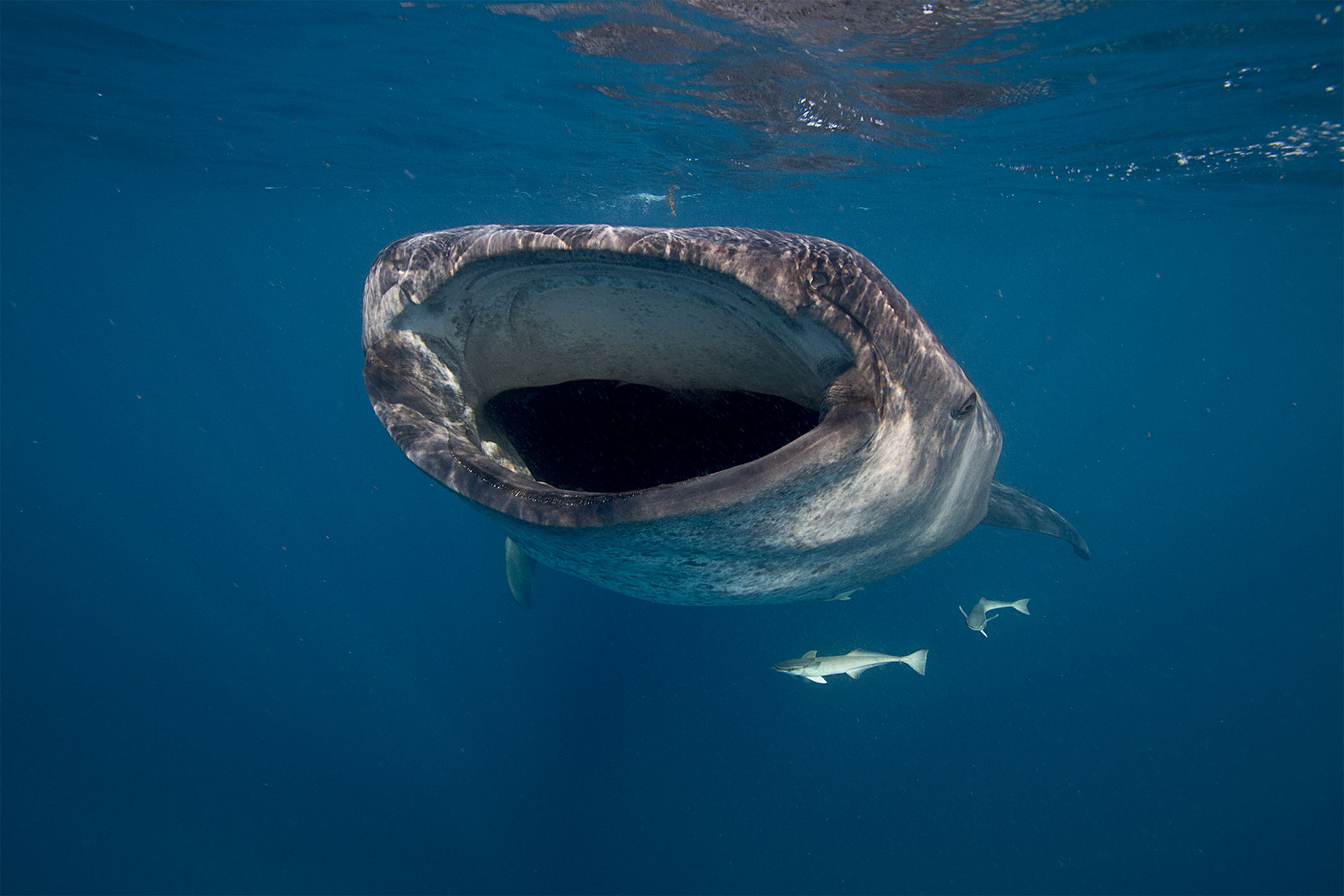

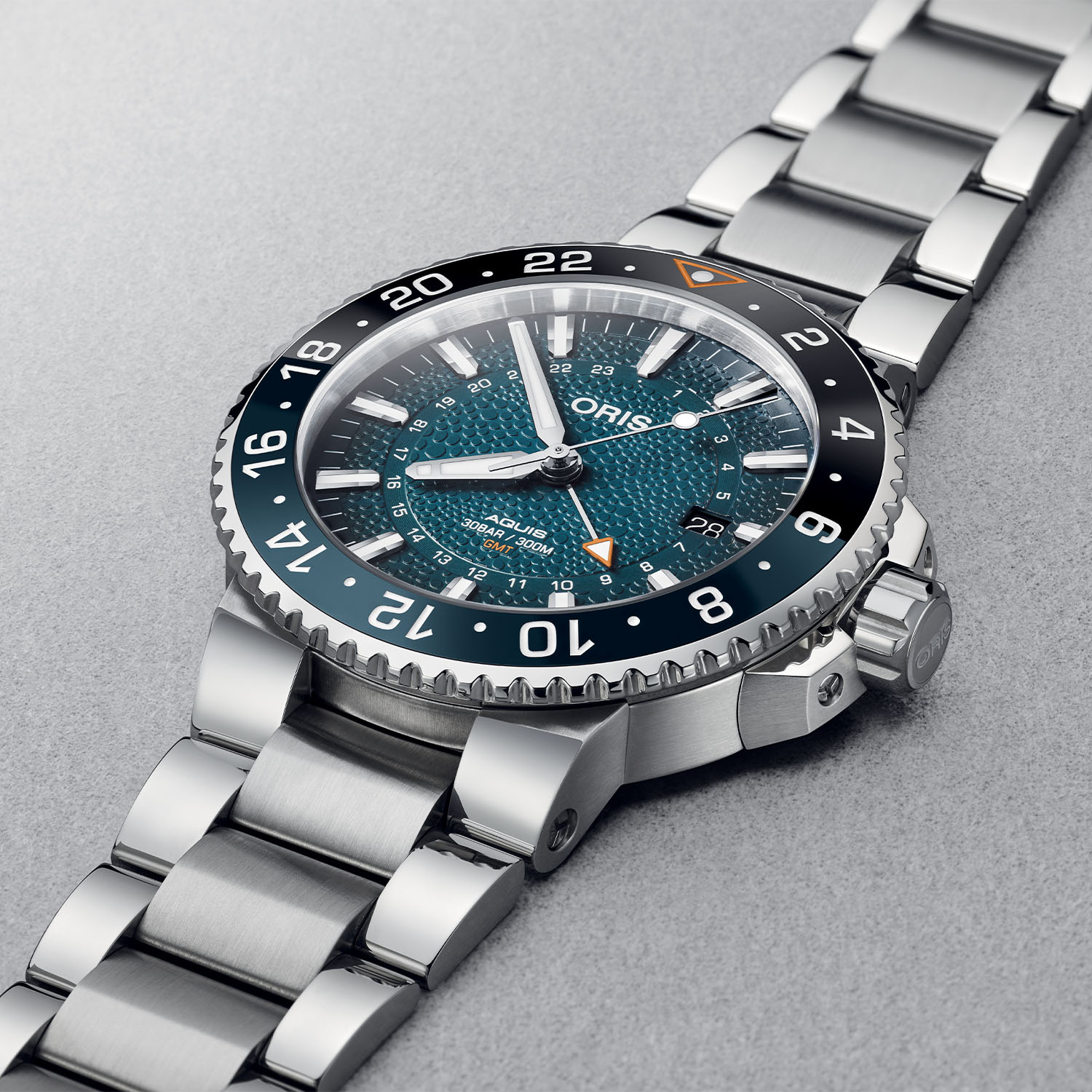


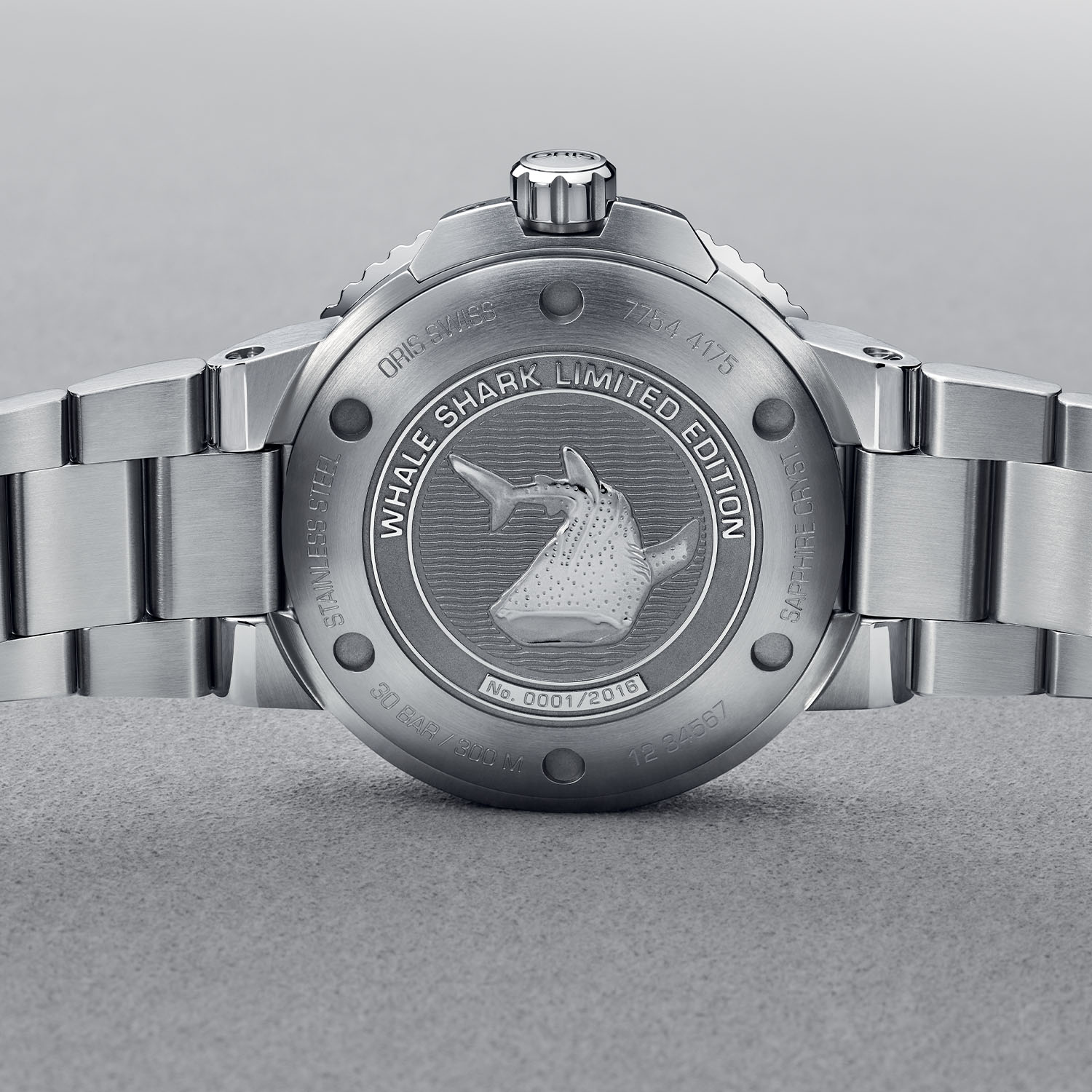
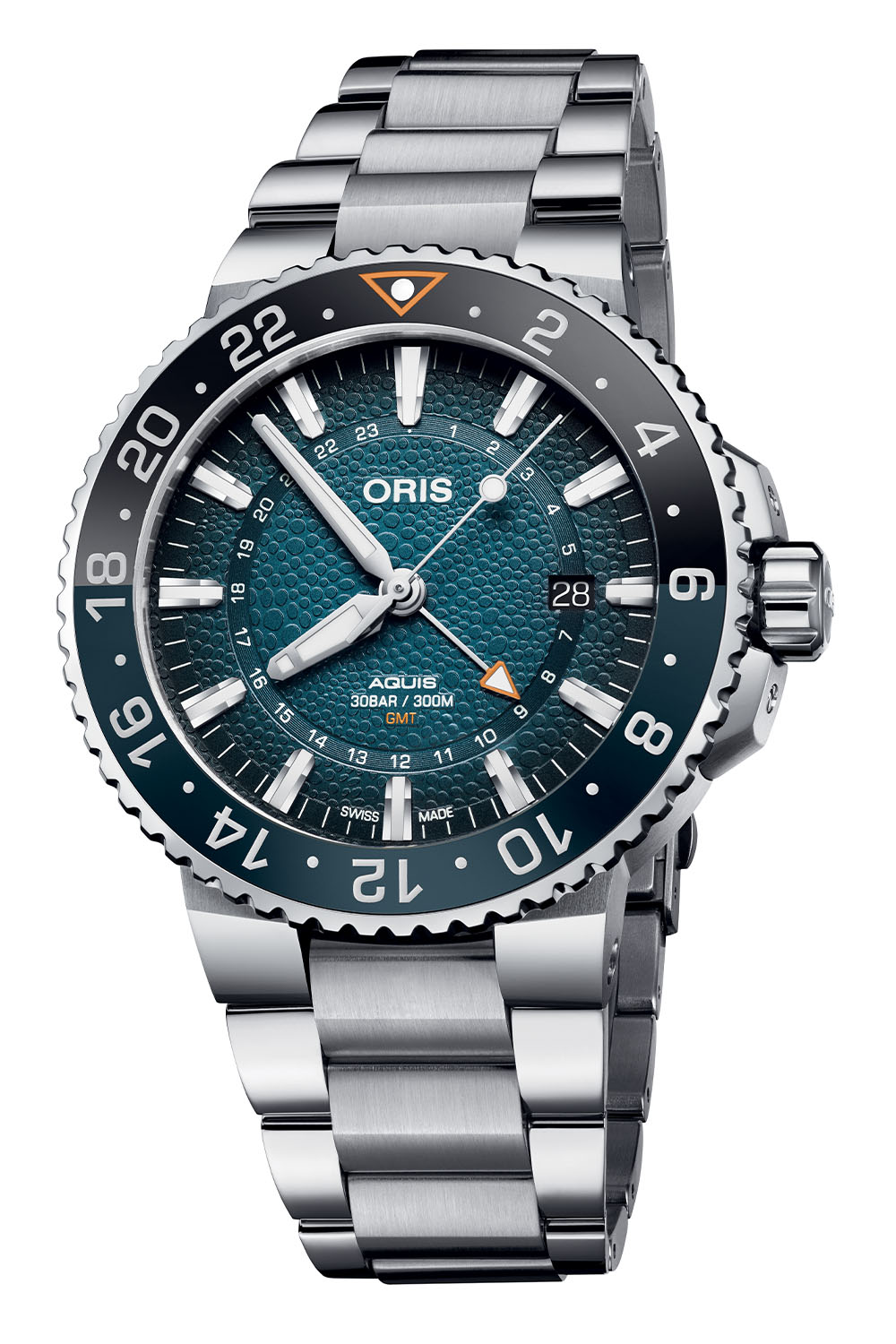



1 response
Am a fan of Oris, and own two different generations of Aquis Date. They offer a distinctive brand look with good build quality and features for the money in a market where so many watches look the same.
To me, Oris is a dive watch company and one thing I would like to see is that they keep the rotating bezel as a dive timing bezel, which is the origin of the Aquis. There is a GMT scale on the dial and if the bezel was still a dive one it would be a more practical and true to itself watch. The dive bezel is a simple timing device for so much more than diving.